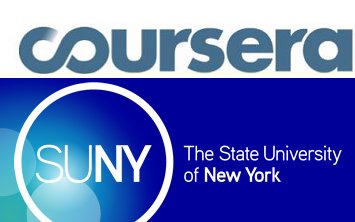The State University of New York and 9 other state university systems have joined Coursera in an effort to expand the role of online education within the universities and their own contributions to Massive Open Online Courses (MOOCs). SUNY’s entrance into the venture will give New York’s nearly half million public university students an opportunity to join the 3.5 million people already enrolled in Coursera.
As the world’s largest MOOC program, Coursera has a unique opportunity to prove the effectiveness of online education through its new partnership with these more traditional institutes of higher learning. The universities themselves will also be adding content to the Coursera program, which presently consists of 374 courses; Stony Brook University will be the first to do so for New York when it creates a MOOC in time for the fall semester.
Nancy L. Zimpher, chancellor of SUNY, praised the endeavor, stating that “Working with Coursera presents a fantastic opportunity for higher education systems across the country to increase educational access, instructional quality and exposure, and degree completion. SUNY students and faculty, alike, will benefit from this partnership as soon as this fall, and for many years to come.”
The exact details of how Coursera will be incorporated into the SUNY system will be ironed out over the summer, but Zimpher noted it will prove “invaluable as we launch Open SUNY.” Announced this March, Open is another new program which will allow all 64 SUNY campuses to share their individual online classes, giving students and faculty access to all of the pooled content. SUNY believes that improvement of its own Internet-bases courses and access to hundreds of MOOCs through Coursera will afford its learners and teachers the opportunity to improve “blended learning,” the fusion of video lectures and face-to-face classroom experiences.
SUNY can also look forward to the content generated from the other states joining in this venture: Colorado, Georgia, Houston, Kentucky, Nebraska, New Mexico, University of Tennessee, Tennessee Board of Regents, and West Virginia.










